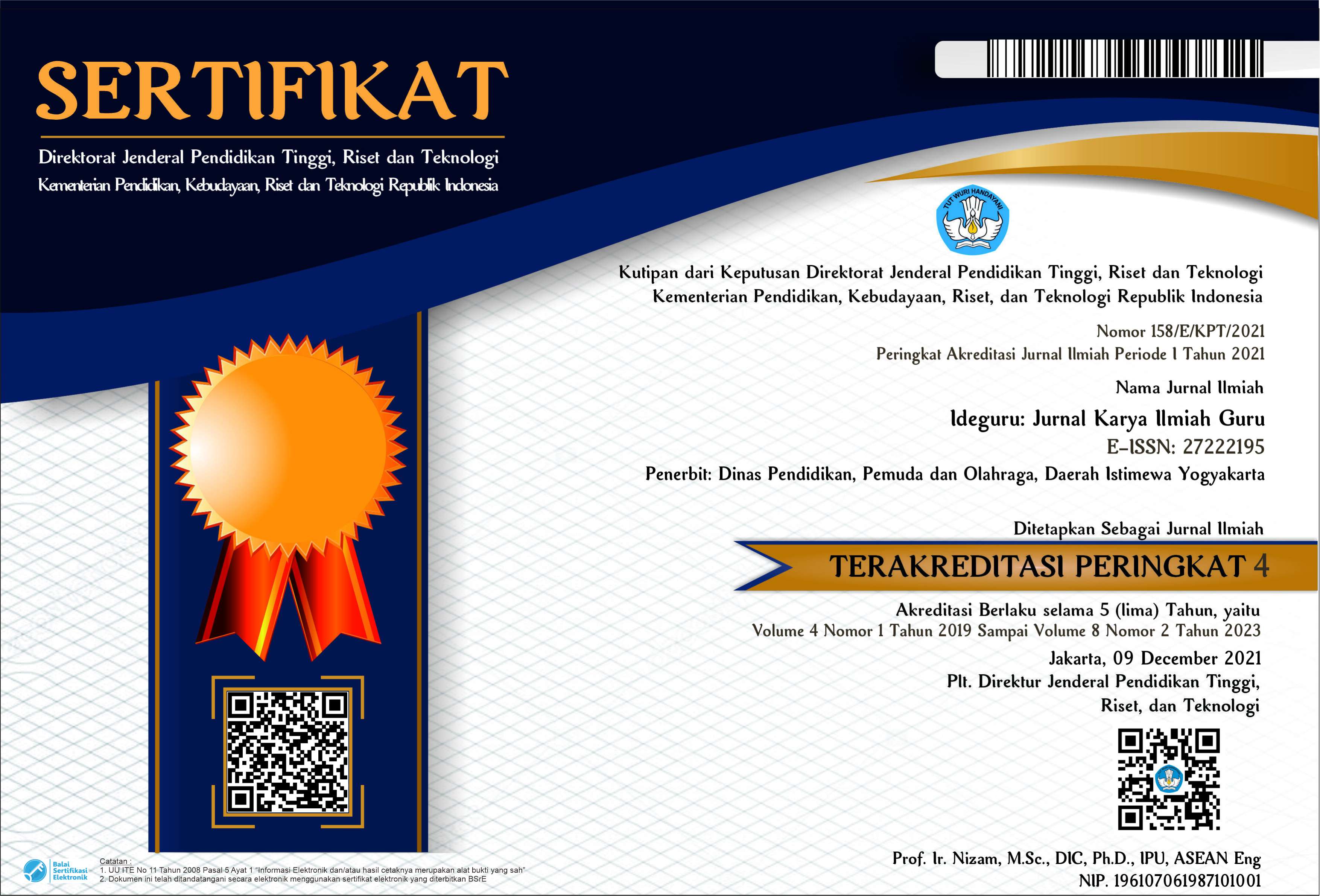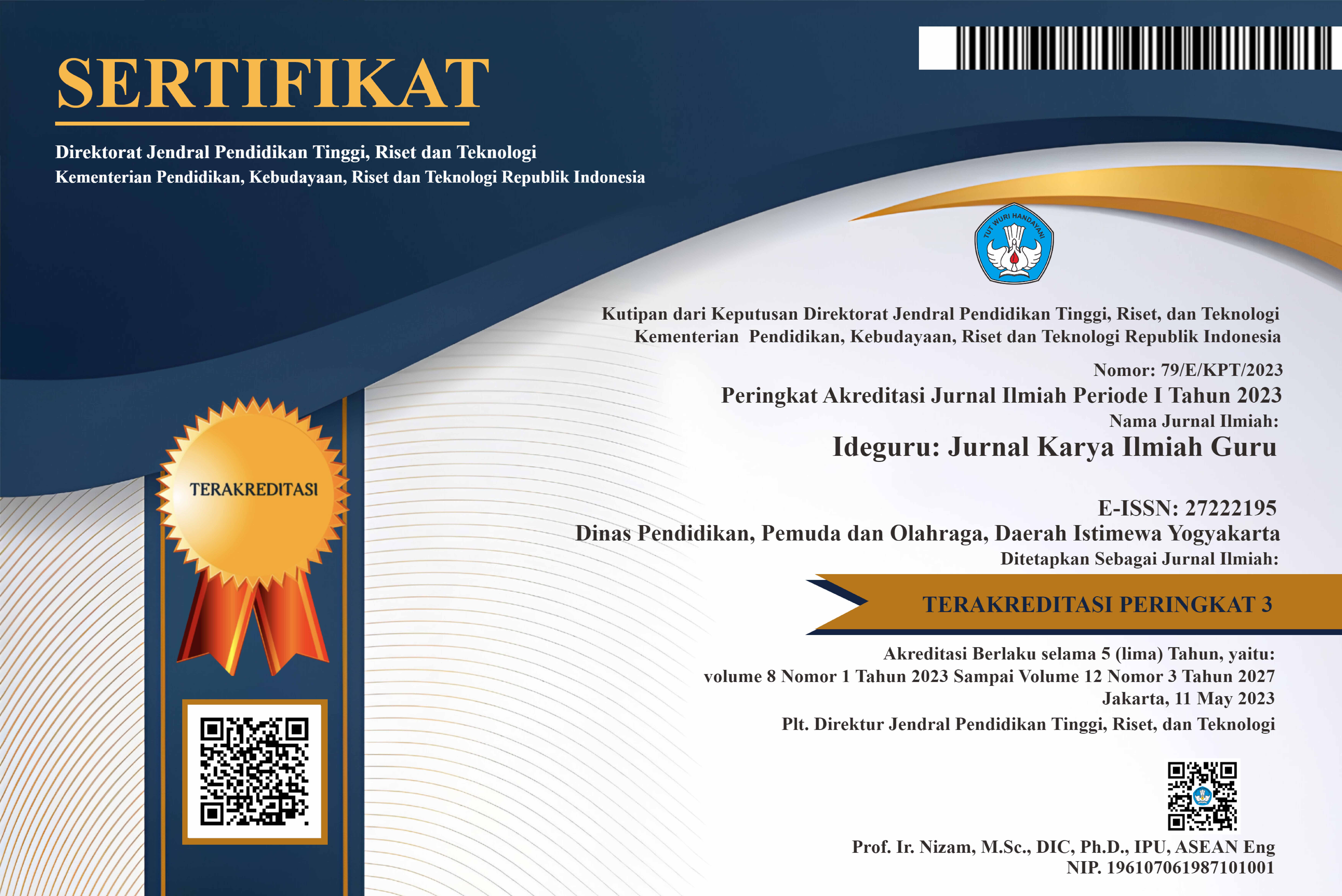Peningkatan Prestasi Belajar Distribusi Normal melalui Model Pembelajaran Kooperatif Tipe Jigsaw
Abstrak
Penelitian Tindakan Kelas ini bertujuan untuk mengetahui pelaksanaan model pembelajaran cooperative learning tipe Jigsaw dalam meningkatkan prestasi belajar materi distribusi normal peserta didik kelas XII MIPA 1 SMAN 1 Bantul Tahun Ajaran 2019/2020 yang memberlakukan pelayanan Sistem Kredit Semester (SKS). Penelitian ini dilaksanakan bulan Januari–Maret tahun 2019 dengan subyek siswa kelas XII MIPA 1 SMAN 1 Bantul, Bantul. Penelitian Tindakan Kelas dilakukan dalam dua siklus, setiap siklus melalui tahapan: perencanaan, implementasi tindakan, observasi, dan refleksi. Mekanisme pengumpulan data penelitian menggunakan lembar pengamatan untuk mengetahui efektivitas dan keberhasilan kegiatan pembelajaran sedangkan tes digunakan untuk mengukur prestasi belajar peserta didik. Setelah data terkumpul dianalisis untuk mengetahui keberhasilan Peneltian Tindakan Kelas. Penelitian ini berhasil bila memenuhi indikator yaitu: 1) ketuntasan kelas dan nilai rerata kelas ; 2) nilai kinerja guru berkategori amat baik. Penelitian Tindakan Kelas ini memberikan hasil bahwa kegiatan pembelajaran menggunakan model pembelajaran cooperative learning tipe Jigsaw dapat: 1) meningkatkan keberhasilan dan efektifitas guru dalam pembelajaran ditunjukkan adanya peningkatan nilai dari 71,4 (baik) menjadi 92,9 (amat baik); 2) meningkatkan ketuntasan dan prestasi belajar siswa ditunjukkan dengan ketuntasan kelas dari 78,78% menjadi 93,93%. dan pencapaian nilai rata-rata dari 81,09 menjadi 91,15.
Data Unduhan PDF
Copyright (c) 2021 Muchayat

This work is licensed under a Creative Commons Attribution 4.0 International License.

 DOI:
DOI:














